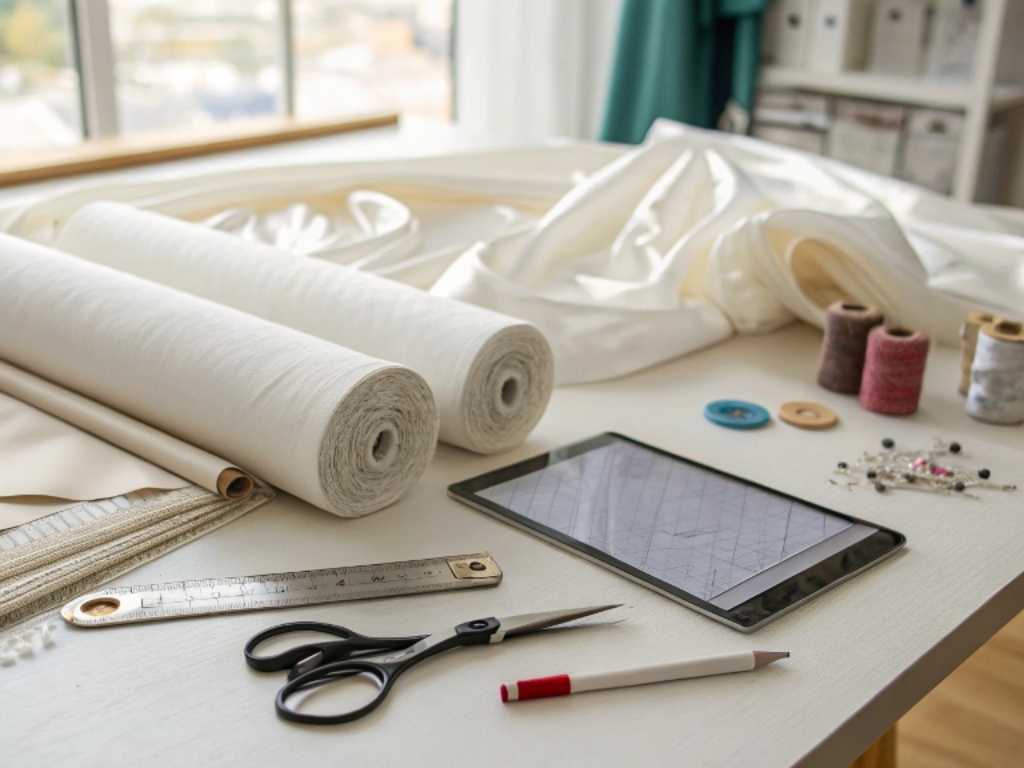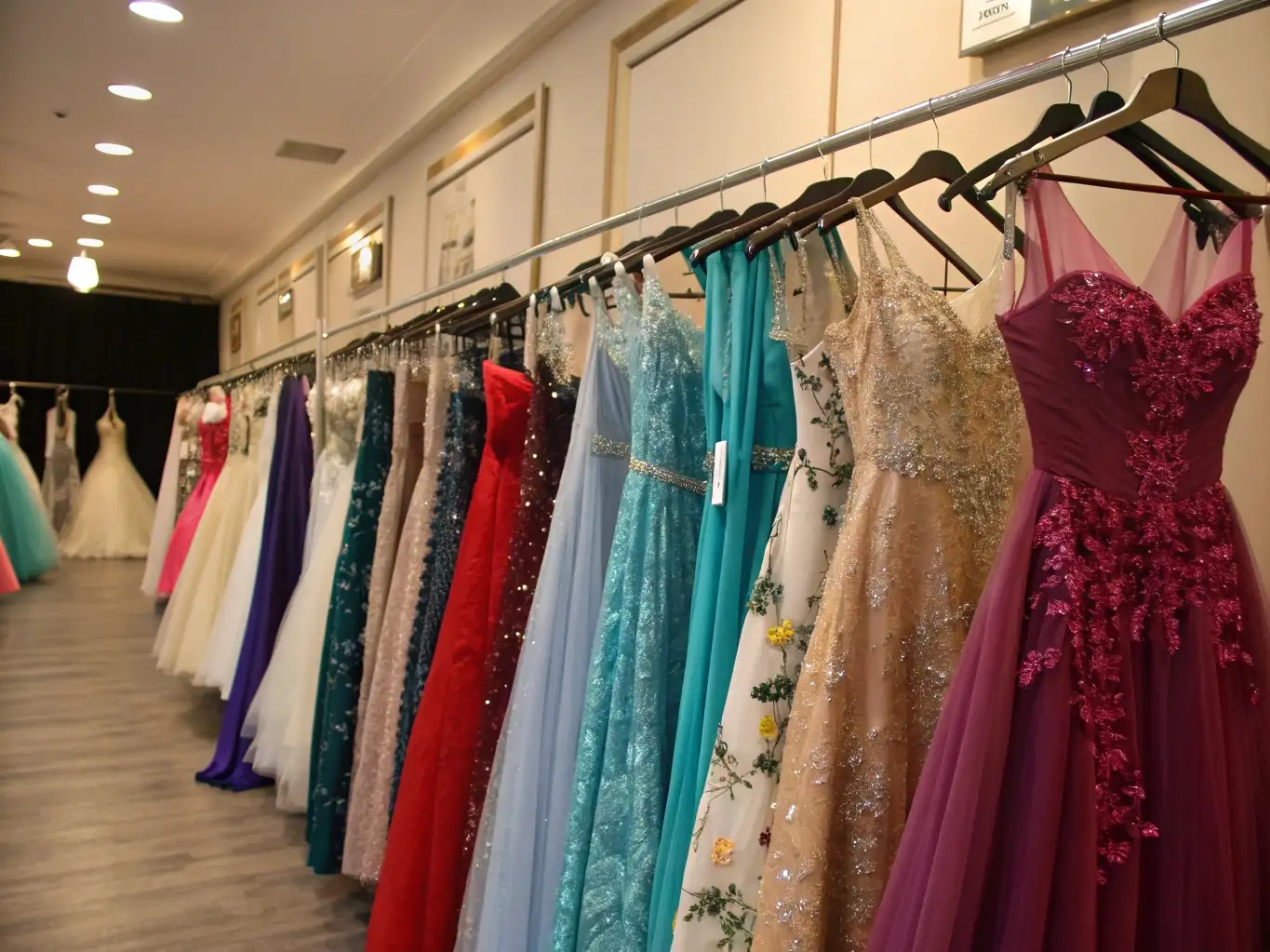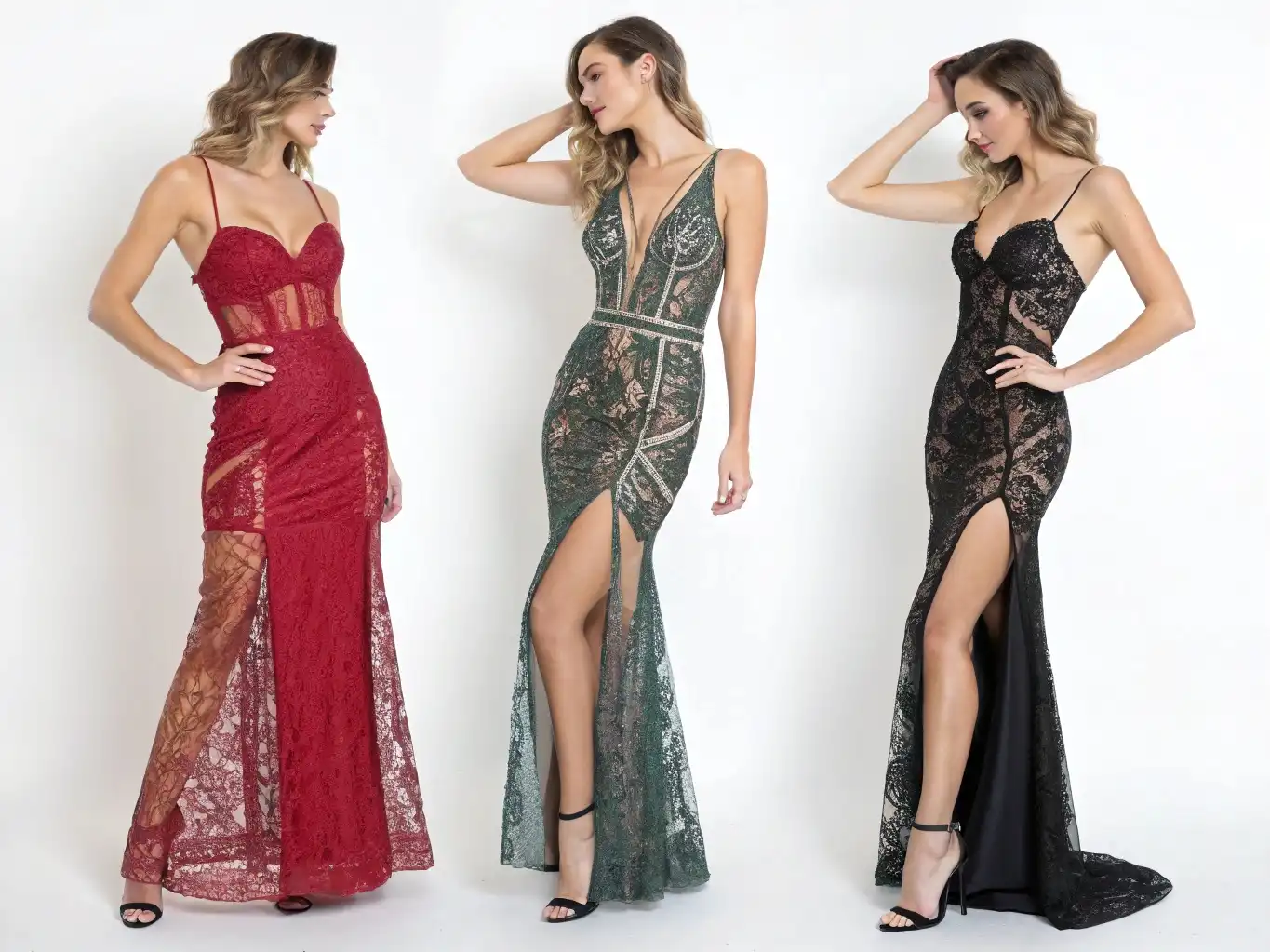Interfacing1 and lining are essential components in professional dressmaking, yet they serve different roles inside a garment. Knowing when and how to use each is crucial for designers, manufacturers, and anyone who wants a dress that looks beautiful and lasts.
Interfacing provides structure and support to specific parts of a dress, while lining adds comfort, coverage, and a polished finish to the garment as a whole. Choosing the right material and application for each is key to long-lasting, wearable dresses.
Let’s break down how interfacing and lining work, their differences, and the expert tips every brand or sewist should know when working with dress inner wear.
What Is Interfacing in Dressmaking?
Interfacing is the secret behind crisp collars, sharp cuffs, and garments that hold their shape. It’s a foundational technique for any structured dress detail.
Interfacing is an additional layer—often stiffer than regular fabric—applied to specific areas of a dress to reinforce, stabilize, and add shape where needed.
How does interfacing add structure and support to specific parts of a dress?
| Feature | Function | Example Areas |
|---|---|---|
| Stiffness | Prevents stretching or collapsing | Collars, waistbands, plackets |
| Support | Maintains crispness and shape over time | Cuffs, button bands, necklines |
| Reinforcement | Helps garments withstand wear and laundering | Facings, pockets, jacket fronts |
Interfacing is vital for areas that see stress or require shape, ensuring these components look sharp wash after wash.
Where is interfacing typically applied—collars, cuffs, waistbands, and facings?
| Dress Part | Why Use Interfacing | Impact on Garment |
|---|---|---|
| Collars/Cuffs | Stays crisp, stands up | Professional, tailored appearance |
| Waistbands | Prevents rolling or wrinkling | Maintains fit and comfort |
| Facings | Stabilizes curved edges | Smooth, neat neckline/armhole |
Facings (the fabric finish inside necklines and armholes) especially benefit from interfacing to keep curves stable and prevent stretching.
What Is Lining and Why Is It Used in Dresses?
Lining2 transforms the inside of a dress, creating a layer that feels good, looks neat, and protects the outer fabric.
Lining is a smooth inner layer sewn into a dress to enhance comfort, hide construction details, prevent transparency, and help the garment drape beautifully.
How does lining enhance comfort, coverage, and garment drape?
| Lining Function | Benefit | Real-World Result |
|---|---|---|
| Comfort3 | Reduces friction, feels smooth | Easier on the skin, especially with textured outer fabrics |
| Coverage4 | Prevents show-through and clinging | Wearable with lighter or sheer fabrics |
| Drape5 | Adds weight for smoother fall | Dress hangs evenly and flat |
A lined dress is easier to put on, more comfortable, and visually cleaner inside and out.
Which dress styles and fabrics benefit most from lining?
| Dress Style/Fabric | Why Lining Is Essential |
|---|---|
| Sheer/Lightweight | Adds opacity and structure |
| Formal/Evening | Smooth silhouette, luxury finish |
| Fitted Styles | Prevents outer fabric from clinging |
| Textured/Lace | Protects skin from irritation |
Lining is especially important for formalwear, summer dresses in sheer fabrics, or any style requiring a flawless finish.
Key Differences Between Interfacing and Lining
Though both are used inside a dress, interfacing and lining have very different purposes and properties.
Interfacing provides targeted structure and stiffness, applied only to select garment areas. Lining is a soft inner layer throughout the whole garment, designed for comfort, appearance, and wearability.
What are the functional and material distinctions between interfacing and lining?
| Feature | Interfacing | Lining |
|---|---|---|
| Placement | Select parts (collar, cuff, facing) | Entire inside of garment |
| Material | Woven/non-woven, often stiff | Smooth, drapey fabrics |
| Purpose | Structure, support | Comfort, coverage, drape |
| Visibility | Hidden inside construction | May be visible on garment interior |
Interfacing is invisible in the finished garment but essential for maintaining shape. Lining is both functional and a visible part of garment quality.
How do you choose the right type for each role in dress construction?
- For interfacing:
- Match stiffness to fabric and dress part (collar: firmer; facing: lighter).
- Choose fusible for speed or sew-in for delicate/heat-sensitive fabrics.
- For lining:
- Prioritize smoothness and breathability (silk, rayon, acetate, polyester).
- Match color and weight to outer fabric for best drape and finish.
| Dress Area | Interfacing Choice | Lining Choice |
|---|---|---|
| Collar/Cuffs | Firm woven fusible | Not needed |
| Bodice/Skirt | None (unless design) | Lightweight, smooth |
| Facings | Lightweight sew-in | N/A (covered by lining) |
Types of Interfacing and Lining Fabrics
The fabric choice for both interfacing and lining impacts comfort, construction, and durability.
Interfacings come in woven, non-woven, fusible, and sew-in types. Linings include polyester, silk, acetate, cotton, and more—each suited to specific dress needs.
What materials are commonly used for interfacing (woven, non-woven, fusible, sew-in)?
| Interfacing Type | Properties & Best Use |
|---|---|
| Woven | Feels like fabric, adds stable structure for tailored details |
| Non-woven | Paper-like, easy to use, great for quick projects |
| Fusible | Heat-activated glue on one side, fast and clean application |
| Sew-in | No glue, ideal for delicate or heat-sensitive fabrics |
Select interfacing based on outer fabric weight and the part of the dress being reinforced.
Which lining fabrics (polyester, silk, cotton) are best for various dress applications?
| Lining Fabric | Properties | Ideal Use Cases |
|---|---|---|
| Polyester | Durable, affordable, easy care | Everyday wear, fast fashion |
| Silk | Luxurious, breathable, natural | Bridal, high-end, formal |
| Cotton | Soft, breathable, natural | Summer, children’s, casual |
| Acetate/Rayon | Soft, good drape | Lightweight, fitted dresses |
Match lining to outer fabric and intended use for comfort and longevity.
Tips for Sewists and Brands Working with Dress Inner Wear
Success in dress construction depends on using interfacing and lining correctly—here’s how to avoid common pitfalls.
Test all inner wear fabrics with your main material, ensure correct application methods, and always finish edges cleanly for lasting comfort and structure.
How do you ensure proper application for long-lasting structure and comfort?
- Pre-wash all fabrics if needed to avoid shrinkage.
- Test fuse interfacing on a scrap to check for bubbling or stiffening.
- Trim seam allowances of interfacing to reduce bulk in seams.
- Understitch linings at facings/edges to keep them inside.
A careful, clean application prevents wrinkling, pulling, or visible edges, leading to a professionally finished dress.
What common mistakes should you avoid when using interfacing and lining together?
| Mistake | Why It’s a Problem | Solution |
|---|---|---|
| Too-stiff interfacing | Garment feels rigid, unnatural | Match weight to outer fabric |
| Wrong lining weight | Dress feels heavy or clings | Choose lining lighter/similar to main fabric |
| Not trimming interfacing | Bulky seams, poor drape | Always trim at seamlines |
| Slippery lining not anchored | Lining rides up or shifts | Secure at hem, underarms, or waist |
Avoid using one-size-fits-all solutions. Test everything with your chosen outer fabric and intended garment style.
Conclusion
Interfacing and lining are both critical for dress quality—but they serve different functions. Mastering their use means more comfortable, longer-lasting, and more professional dresses for any brand or sewist. Always test, match materials thoughtfully, and prioritize both structure and comfort in your construction process.
-
Understanding interfacing is crucial for achieving structured and professional-looking garments. ↩
-
Lining enhances comfort and appearance, making it essential for quality dressmaking. ↩
-
Discover how lining improves the wearability and comfort of dresses. ↩
-
Understanding coverage helps in choosing the right lining for various fabrics. ↩
-
Drape affects how a dress falls and looks; learn how to achieve the best results. ↩






